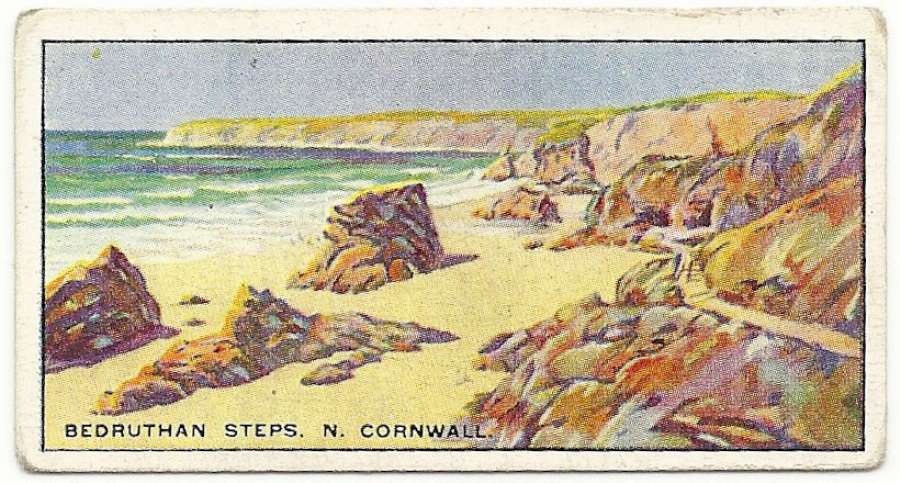History

Carnewas is located on the North Cornwall coast between Newquay and Padstow, and was taken over by the National Trust in 1930. The name Carnewas comes from the Cornish language, meaning the" rock pile of the summer dwelling." There have been people living in the area since the Bronze Age. Situated nearby to the north, there are six barrows, and overlooking Bedruthen Steps is the site of Redcliffe Castle dating back to the Iron Age. This is one of three in the area which were called promontory forts. These forts or cliff castle were defensive structures and are thought to have been permanently occupied. In 2009 a menhir or longstone was discovered in a boundary hedge close to the coastal footpath.
In the past the area was mined for haermatite and it is thought that the ladders and steps to the beach were needed to reach the mine workings. The National Trust shop was originally the Count house of the Carnewas Mine, and the Café was the stable for the mine ponies.
The name Bedruthan Steps is said to be taken from a mythological giant called 'Bedruthan' who used the rocks (stacks) on the beach as stepping stones. Each of the stacks has a name and from north to south they are Queen Bess, Samaritan Island, Redcove Island, Pendarves Island and Carnewas Island. Samaritan Island is named after a ship the Good Samaritan which was wrecked there in October 1846 with the loss of eight lives.
The Good Samaritan came ashore
To feed the hungry and clothe the poor
With barrels of beef and bales of linen
No poor soul shall want for a shilling
Each Mother Cries, "your father's gone.
Who will for us provide?"
While soothing friends perhaps may say,
The lord will that decide
Oh! Heavy news for owners too
And merchants 'tis indeed
Perhaps they've lost their very all
With nought to serve their need
But had the Lighthouse been complete
The time it was begun
Eight precious lives might have been saved
And "Good Samaritan"
May tradesmen on that fabric all
Their time quite well employ
And may they on that structure raise
The topmost stone with joy
And soon the spacious lantern place
On that stupendous pile
With brilliant light a guide for ships
That in this channel toil
The which I trust will wrecks prevent
That we may hear no more
Of lives being lost or vessels wrecked
In pieces on our shore.
Trevose Head light house which is visable from the Tea room
garden was opened on the 1st December 1847.
